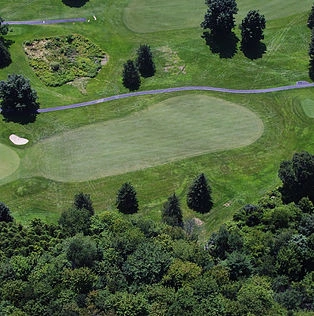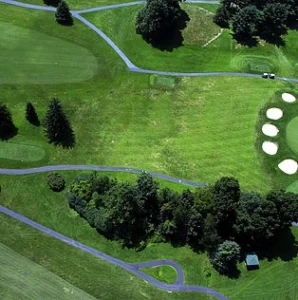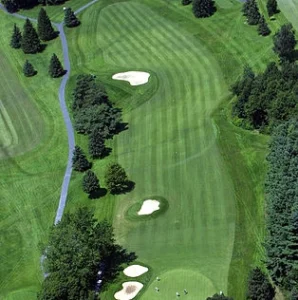Course Tour
Course Overview
Walter Travis was one of the leading course architects of the early 20th century. Himself a winner of the British Amateur in 1904, he went on to design – or redesign – a number of highly regarded courses including Garden City, Ekwanok in Manchester, VT, and Yahnundasis in Utica (home course of the NYS Amateur Golf Association). His courses have earned a following that has been institutionalized in the Walter J. Travis Society, which preserves his heritage and course histories.
Today the course bears Travis’ signature design principles: Bunkers requiring particular attention from the teeing ground, and undulating greens [in Travis’ words “seldom if ever flat…”].
One round – even a look – illustrates the varied topography on which Travis applied his principles. Our course ranges over 325 acres and is arguably the most scenic course in the Capital District. The 10th green and 11th tee are perched above the club house, and on a clear day, the view extends over 50 miles southwest to the Catskill Mountains.
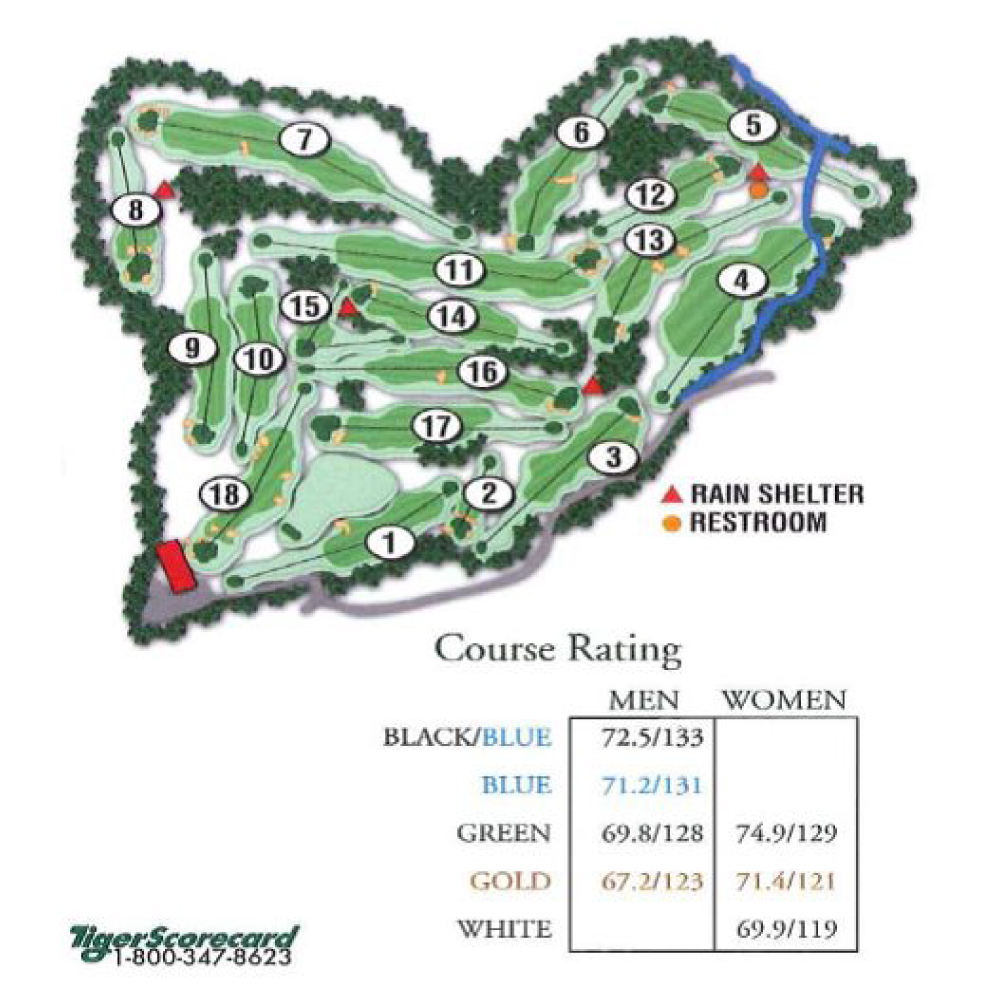
Hole by Hole Tour
| HOLE | 1 | 2 | 3 | 4 | 5 | 6 | 7 | 8 | 9 |
|---|---|---|---|---|---|---|---|---|---|
| Black | 405 | 146 | 367 | 531 | 415 | 358 | 559 | 193 | 425 |
| Blue | 387 | 146 | 367 | 475 | 374 | 358 | 544 | 193 | 390 |
| Green | 375 | 129 | 337 | 451 | 354 | 333 | 510 | 185 | 387 |
| Gold | 346 | 125 | 327 | 409 | 283 | 283 | 479 | 173 | 324 |
| White | 344 | 122 | 322 | 405 | 279 | 279 | 425 | 169 | 320 |
| HOLE | 10 | 11 | 12 | 13 | 14 | 15 | 16 | 17 | 18 | IN | TOTAL |
|---|---|---|---|---|---|---|---|---|---|---|---|
| Black | 395 | 527 | 255 | 387 | 357 | 141 | 427 | 369 | 406 | — | 6663 |
| Blue | 366 | 512 | 227 | 387 | 357 | 141 | 427 | 369 | 357 | — | 6377 |
| Green | 362 | 503 | 205 | 368 | 348 | 124 | 416 | 358 | 339 | — | 6084 |
| Gold | 300 | 450 | 172 | 303 | 300 | 98 | 378 | 349 | 334 | — | 5450 |
| White | 274 | 395 | 147 | 298 | 263 | 96 | 330 | 346 | 330 | — | 5160 |
| SLOPE | MEN | WOMEN |
|---|---|---|
| Black | 133 | – |
| Blue | 131 | – |
| Green | 128 | 129 |
| Gold | 123 | 121 |
| White | 119 | – |
| RATING | MEN | WOMEN |
|---|---|---|
| Black | 72.5 | – |
| Blue | 71.2 | – |
| Green | 69.8 | 74.9 |
| Gold | 67.2 | 71.4 |
| White | – | 69.9 |
- Hole 1
- Hole 2
- Hole 3
- Hole 4
- Hole 5
- Hole 6
- Hole 7
- Hole 8
- Hole 9
- Hole 10
- Hole 11
- Hole 12
- Hole 13
- Hole 14
- Hole 15
- Hole 16
- Hole 17
- Hole 18
A tough opening par 4 that looks so simple, with only two fairway bunkers to avoid with a right center tee shot that hopefully carries the crest of the fairway. From the fairway, the hole plays slightly downhill to a relatively flat raised green that slopes from front to back slightly. The green has no bunkering, but the closely mown sides can lead to awkward chips. Making par from the fairway is easier said than done.
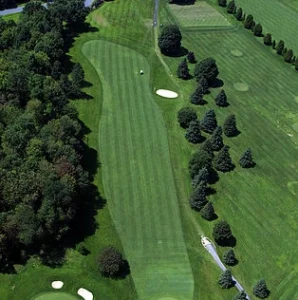


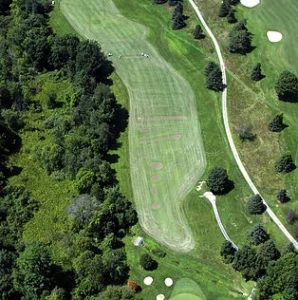


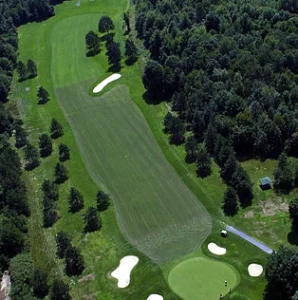
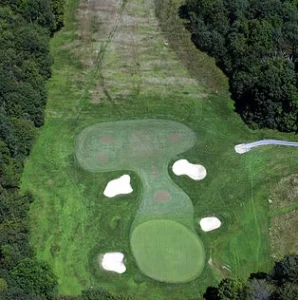

The last of this difficult three-hole stretch is an uphill par 4. Be careful not to hit your tee shot through the landing area. The ideal tee shot is the right side of the fairway just left of the pine trees, which affords the best look at the green. A false front and sloped right side add to the difficulty of getting on the green. The second shot always plays 1 club longer at least. The green is large and sloped from back to front. The smart play is to find the center of the green.

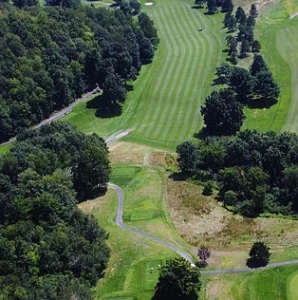
A long downhill par 3 that measures 255 yards from the back tees. The green features a large swale (“The Tub”) in the middle of the green. Everything rolls to the right side of the green. It is better to be on the front edge of the green for a front pin and the back edge of the green for a back pin. Take your par if you can and move on!
